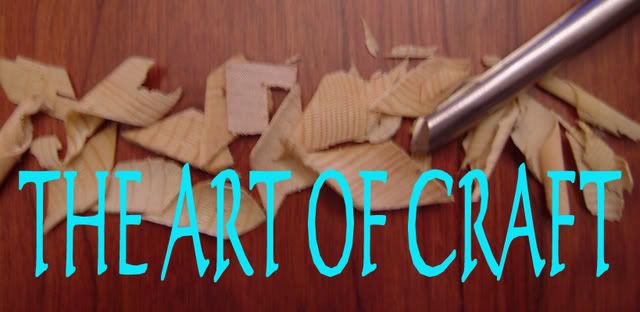When you look at your image on the screen of your monitor you are looking at an image that is the result of the settings and profile of your particular monitor, your graphics card, and your operating system's color profile. What you see may not be what I see. What may look like a yellow tone on your monitor may come across with an orange tone on mine. What is light on one monitor may be darker on another. This is just a fact of computers.
You can adjust all of this using software and a set diagram of colors to match from print to monitor, but if my monitor is not adjusted the same way, I am still going to see something different than you are seeing. So the basic rule of thumb - make it look good on your monitor with your preferred image editing software - as we spoke about in the last article - and hopefully what I see will be close to what you see. You can't worry too much about this - if at all.
When you look at your image, you need to decide first, does it have anything in the image that you do not want to have in your finished photo of your product. Is the product where you want it - do you need to center it? Are there dust spots that were on your background or ground fabric? Let's correct for this first.
Go to your cropping tool and set it on freehand or freestyle. This will allow you to crop without restriction to any particular size. When the cropping box comes on the screen you can move it around and make it bigger or smaller. Usually the part of the photo that will be taken out is darkened while you do this so that you can see exactly what you are going to get. If it is not check the crop settings because you should be able to have it do this. Got what you want. Crop it with a click of the check mark or whatever your software has to click on.
Now look at the photo again. Is there dust on the cloth? The clone tool will take this out. But be careful and do not over do this. This tool works by clicking on a good part of background close to the dust spot - a place that is exactly like the background under the dust. Then by clicking on the dust spot you will replace it with the background sample. Use a small brush point cursor and always remember that your sample selection will move each time you move to a new spot to replace. There will be an X on the screen that will show the sample spot. Make sure that is always what you want it to be or just select a new sample as you did the first time.
So now you have an image that is clear of stray marks. The next thing to look at is the image itself. Is it too dark? Too light? Do the colors of the product in the photo match the colors of the actual product? PS Elements, Corel Paintshop Photo Pro, and Picassa have autocorrect tools. These are generally found in the menus under Image. Open that tool and you will see a screen with slider bars and a sample of your image. There is another tool called quick fix that will do everything in one step without any input from you. Try that first if you like. If you do not like the result, then click on UNDO in the edit menu to get back to where you were before that correction. In the more extensive tool you will see a box that says PREVIEW. Click a check mark into Preview. Your corrections will now appear on the full image on your screen. No permanent changes will take effect yet. If there is an auto box, click on that. It will set the image to how the software thinks it should look. This is the same as clicking on the quickfix tool. Now go to the sliders - there may be one for color, brightness, contrast, highlights. shadows, focus/sharpness and if you open advanced features on this tool you may even have a slider for white balance. Move each of these sliders around until you get the image that you want. You should not need to do to much correction if your camera is doing its job. When you see what you like then click the finish or done button and your changes will be saved to your image. Now what you see on the screen is what you are going to get. If you hate what you see go to the Edit menu on top and click UNDO and start again with this last step.
The final thing to do is get your image to the size that you need it. This actually may all you need to do if your image came out of the camera exactly as you want - which is should. Go to the Image menu and look for Resize or Resize Print. You do not want "Resize Canvas". You will now see a box open where you can put in settings to resize your photo. Remember this - always make smaller - never make bigger. Unless you are very experienced with your image software you will get a poor image if you try to enlarge it. If you are shooting with your camera set at a high res/high pixels you are going to be working with a large image, so you will not need to even think about enlarging the image. Make sure that the box that says Constrain Proportions is checked - otherwise your resize may distort your image. Sites such as Etsy have a maximum number of pixels for a photo that you may upload and have displayed. The Etsy maximum is 1000 pixels in width. I always use that and let the software determine the length. Put 1000 into the top width box. A number will appear in the length box automatically. Make sure that the box next to these shows Pixels. You do not want anything else in that box - especially not inches! Click on resize or done at the bottom of the box and your image is sized for the website. If I have an image that is long and thin, then I will put the 1000 in the length box instead and resize that way. This will work too.
Look at your image. Your result could be that when uploaded to your shop the image will go beyond the thumbnail image box but it will look perfect when viewed on the item page. If this bothers you then when you crop, you must crop as close to square as you can. This is not always possible to get what you want into your image. It is a trade off as to the thumbnail view exactly matching the full item listing view - or re-shoot from a further distance to be able to crop square.
When you have completed all of these steps save your image using the SAVE AS command and not SAVE. You want to keep your original, at least until you upload your image to your shop, just incase you want to come back and recrop.
There you have it! All of these articles and all of this time, but you have a great product image in your shop, on your website, or in your print catalog!
Future articles will cover other suggestions for taking good product photos. Keep watching for an article just about the different types of tripods.
Subscribe to:
Post Comments (Atom)













2 comments:
Very thorough! How nice of you to post these tips. :)
Found you on the Etsy forums. Have a great day!
-Amanda
Great information.Thanks
Post a Comment